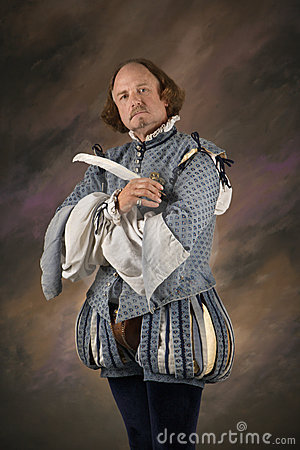Q:
It seems that stories told in the oral tradition had to find their way down through a number of cultural and authorial filters before they reached our generation. When we hear these tales today are we hearing fragmented versions or did the story still maintain its core shape? Does it even matter or is it even better that the story has been molded over time because now they seem more pertinent to the type of world we live in today?
A:
It is no surprise that fairy tales have been edited and reformed a great deal from the time they were originally created. The earliest versions of fairy tales contain a lot more sex and violence than versions that are read by children today. As Maria Tatar writes in her essay “Sex and Violence: The Hardcore of Fairy Tales”, [Readers] will find themselves hardly prepared for the graphic descriptions of murder, mutilation, cannibalism, infanticide, and incest that fill the pages of these bedtime stories for children” (364).
The inclusion of sex and violence seems to add a level of morality to the tales. The violence in fairy tales seems to either come as an act of retribution, repaying the transgressions of the antagonists, or as a senseless act that leads readers to vilify the antagonist. For instance, in “The Juniper Tree” by the Brothers Grimm the stepmother kills her stepson, cuts him up into pieces, and serves him in a stew to her husband. This act vilifies her and causes the reader to wish her demise. This eventually comes later in the story when a bird, the reincarnation of the dead stepson, drops a millstone on the evil stepmother’s head crushing her to death. Though this is a violent image, it is valuable as an act of retribution. It seems justified because of the stepmother’s earlier act of violence.
In a way, the omission of these “taboo” themes has undermined the theme of morality in these tales. If the evil stepmother of a fairy tale does not get her just reward, morality is not served. The sex and violence that was originally included served as a kind of “over-the-top” message. This message is that unspeakably horrible things will happen to people who transgress the morality of the story. The absence of these intense repercussions has less of a shock value and, thus, contributes less to the value of these tales as moral instruction for children. The spectacle of intensified sex and violence would leave an indelible mark on the child’s mind and drive home the message far more effectively than if they are omitted.
The omission of perverse sexuality in fairy tales, however, does not undermine themes of morality. In fact, most of the tales containing such themes as incest have been filtered out of the canon of children’s literature. The theme of incest never really contributed much to themes of morality because the perpetrator is never punished in the end. Usually, the family members are reunited and all is forgiven because the tale needs to end happily. If the family members were not to reunite, themes of strong familial relationships would be undermined in fairy tales. The cohesiveness of the familial unit can not be compromised. Omitting themes of perverse sexuality actually strengthen this theme of familial cohesiveness, refusing to allow any rifts in the familial unit.
Overall, the omission of intensified sex and violence has taken away important elements the stories. The messages that the stories tell may not be driven home with the type of force that they could including these themes. Omitting such elements only serves to shelter children from reality. In real life, sex and violence are a common occurrence. Therefore, they should be included in fairy tales if they hope to provide moral instruction and to emulate situations in the real world.
Q:
Cinderella always seems to take a self-effacing role when she disguises herself as Catskin, Allfur, Donkeyskin, etc. She even changes her identity so far as to change her very name. What does this say about her character and the situation she is in?
A:
In “Catskin”, “Allfur”, “Donkeyskin”, and “Thousandfurs” the Cinderella figure must always undergo a change of identity. She dons a disguise to hide from her old identity and stays in disguise until she feels it is safe to come out. While she is in disguise, she is always self-effacing, subservient, and humble. She assumes the identity of a lowly creature, something that is sub-human. She takes on tasks of menial labor and she bears the brunt of verbal assaults while she is in disguise.
It can not be overlooked that this change in identity comes as a result of incestuous desires from the father figure. In a way, the Cinderella figure is attempting to distance herself from her old identity because it is the one that attracted the sexual advances of her father. This act of incest has crippled the Cinderella figure. It has destroyed her honor and her sense of self-worth. She lets people trample on her while she is in disguise because she feels that it is the same way her father has treated her. It is an act of betrayal so demeaning that it leaves the princess with no other option than to rid herself of her identity.
Her new identity makes her a moral character. She does not lash out angrily against her father for his transgression, but rather disappears into her disguise. It is an innocuous act that allows her to hide from her old identity. Her refusal to exact revenge on her father for his transgression means that she is a moral character, willing to turn the other cheek on people who have betrayed her. This reaction is the proper one in terms of religion. In Christianity, forgiveness is heralded as the course of action to take. Cinderella never displays anger or frustration, only happiness. Her cheery disposition makes her a much more agreeable character and lends to the feeling that she deserves her happy ending.
A feminist reading of these stories might reveal that Cinderella is a weak female character. Perhaps she should take agency over her own life and take action against her father. This wouldn’t necessarily take away from the morality of her character since this act of violence would be an act of retribution. In many fairy tales, exacting revenge on an antagonist is included and acceptable. This scenario would, however, undermine the theme of family in fairy tales. In each of these “Cinderella” variants Cinderella is reunited with her father in the end and all is forgiven. If she were to take action against her father to exact revenge, they could not be reunited in the end and a gaping hole would be left in Cinderella’s life. The ending of such a fairy tale would then be dis satisfactory.
Q:
Why does the beast in these stories always need someone else to throw their beastly skins into the fire? Is there something about this process that seems ritualistic?
A:
In stories such as “The Pig Prince”, the beast figure in the tale is not truly a beast, but is a man cursed to be trapped in a beast’s body. The overt sexuality in these fairy tales lead to the psychoanalytic reading that the beastly disguise they are forced to wear is a symbol of their immature sexuality. The main character in “The Pig Prince” is looking to get married, but has trouble finding a suitable mate because of his beastly disguise. He is a brutal character, killing his first two wives by stamping them to death after he finds out they plan to kill him in his sleep. This kind of brutality is a mark of the beast identity.
Throwing the beastly skin into the fire is, thus, a symbol of the prince’s coming of age. He is able to love his wife tenderly and to love her trustingly once this disguise has been destroyed. Whereas before when he was a single bachelor his drive in obtaining a mate was sexual, his drive after the disguise has been destroyed is pure and full of love. The act of marriage has civilized the prince, tying him down to one sexual partner to whom he must remain true.
The fact that it is somebody else that must discard the skin symbolizes society validating the prince’s new identity. They facilitate the destruction of his old, hedonistic identity and help him to move forward. The new prince will no longer be brutish or uncultivated, but culturally validated in his new identity as a being that is full of tenderness and love. Everyone in the tale wants the prince to move forward in this way and, in turn, the prince wants the validation of the other characters in the tale. He is unable to shed the beastly skin alone because he is not sure of which identity is the best for him to assume. With a helping hand, he is able to move past his bestial desires. Destroying the skin is an act of civility, hence his need for others to help him along. After shedding his bestial identity, the prince can assume a normal role in society.
Works Cited
Tatar, Maria, ed. The Classic Fairy Tales. New York: W.W. Norton & Company, Inc., 1999.
Zipes, Jack, comp. The Great Fairy Tale Tradition. New York: W.W. Norton & Company, Inc., 2001.




